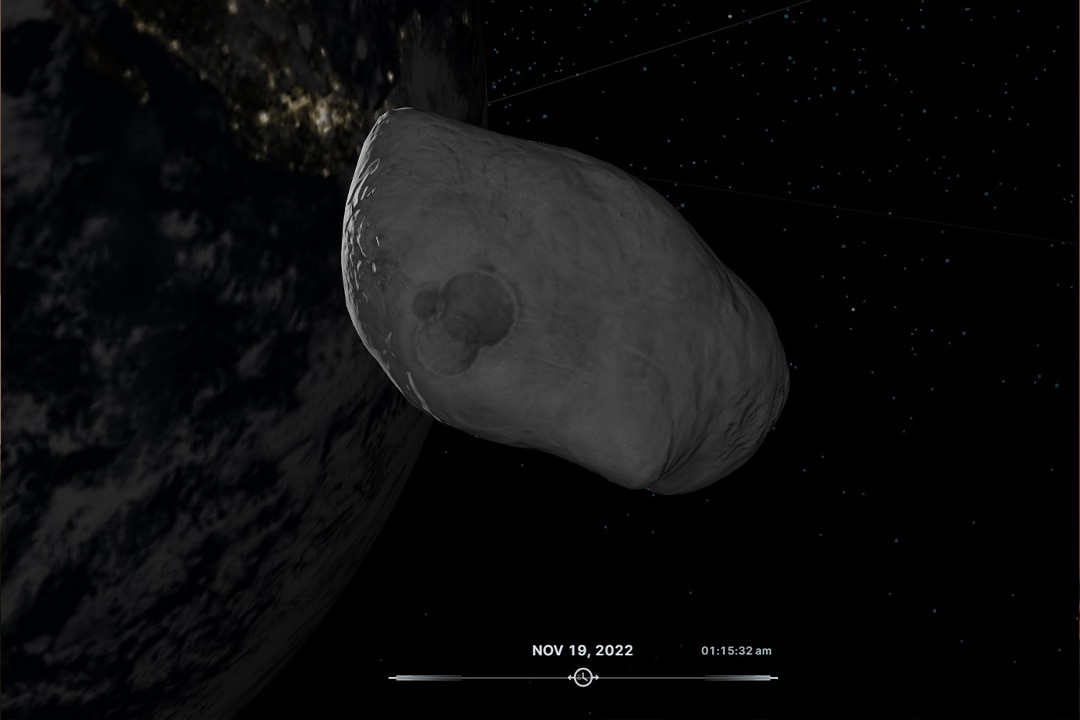Create a free profile to get unlimited access to exclusive videos, sweepstakes, and more!
The astronomical community accurately predicted an asteroid impact
It's better if we find them before they find us.

Ever since we found out what an asteroid did to the dinosaurs, we’ve been worried that there might be an object out there with our names written on it. For most of our history, if something had come screaming in to end our species once and for all, there wouldn’t have been anything for us to do about it. Most of our efforts, as it pertained to cosmic planet killers, was to imagine what we might do in movies, like the 2014 sci-fi flick Asteroid vs. Earth (now streaming on Peacock!). In recent years, however, considerable effort has been put into the identification and defense against potentially dangerous near-Earth objects.
We need only look so far as the recent DART mission to learn that humanity means business when it comes to not being smooshed by a giant space rock. We most often think of planetary defense as being the purview of government organizations with acronyms for names, but it isn’t just NASA, ESA, and JAXA who are keeping an eye on our planetary borders. Astronomers around the world, both professional and amateur, are keeping their eyes peeled and their telescopes pointed up in search of anything which might be travelling in our path. Recently, those efforts paid off when the global astronomical community successfully identified and tracked a small near-Earth object hours before impact, according to NASA.
RELATED: Greenland is a good disaster movie, but as the stars agree, not exactly a "fun" one
Nov. 19 was a Saturday, and it was the early hours of the morning when a tiny asteroid tore through the sky over Ontario, Canada. Unlike other small impactors, observers knew this one was coming and were ready for the show. One might wonder what sort of people run toward a looming asteroid impact, like storm chasers of the future, but they weren’t in any real danger. The asteroid, which was dubbed 2022 WJ1, was only about a meter wide and broke up in the atmosphere before it made landfall. It’s expected that shards of the object might be scattered along the southern shore of Lake Ontario and surrounding areas.
The asteroid was first detected by the Catalina Sky Survey, which NASA funds, located at the University of Arizona in Tucson. They reported the finding to the Minor Planet Center, an international body involved in the precise measurement of small celestial objects. The report was then published to the MPC’s Near-Earth Object Confirmation Page, a publicly available page which hosts data on objects of interest.
That data was instantly picked up by NASA’s Scout impact hazard assessment system, which started calculating trajectories and potential impact sites. The first crunch of the numbers calculated a 25 percent chance that 2022 WJ1 would impact the Earth somewhere along a path which stretched from the east coast of North America to Mexico. Meanwhile, astronomers elsewhere also joined the hunt to track 2022 WJ1.
As the hours wore on, astronomers around the world continued observing and providing information, which Scout used to refine its models and make better predictions. In addition to professional astronomers, a group of amateur astronomers at Farpoint Observatory in Kansas watched the object for more than an hour. It was their observations that allowed Scout to confirm with 100 percent confidence that 2022 WJ1 would impact the Earth. Not only that, but it also allowed Scout to predict the precise time and location of impact: Ontario, Canada at 3:27 a.m. Eastern on the morning of Nov. 19.
With two hours to spare, they were able to put out an alert, letting astronomers in the area know when and where to go. As a result, astronomers were able to get out to the site and photograph 2022 WJ1’s entry.
“The planetary defense community really demonstrated their skill and readiness with their response to this short-warning event. Such harmless impacts become spontaneous real-world exercises and give us confidence that NASA’s planetary defense systems are capable of informing the response to the potential for a serious impact by a larger object,” said Kelly Fast, Near-Earth Object Observations program manager for the Planetary Defense Coordination Office at NASA Headquarters in Washington.
The successful detection of 2022 WJ1 is now the sixth time astronomers have successfully found a relatively small object before it hit home. It bodes well for our ability to detect something larger and meaner in the future. And do something about it.
Stream Asteroid vs. Earth on Peacock.


























